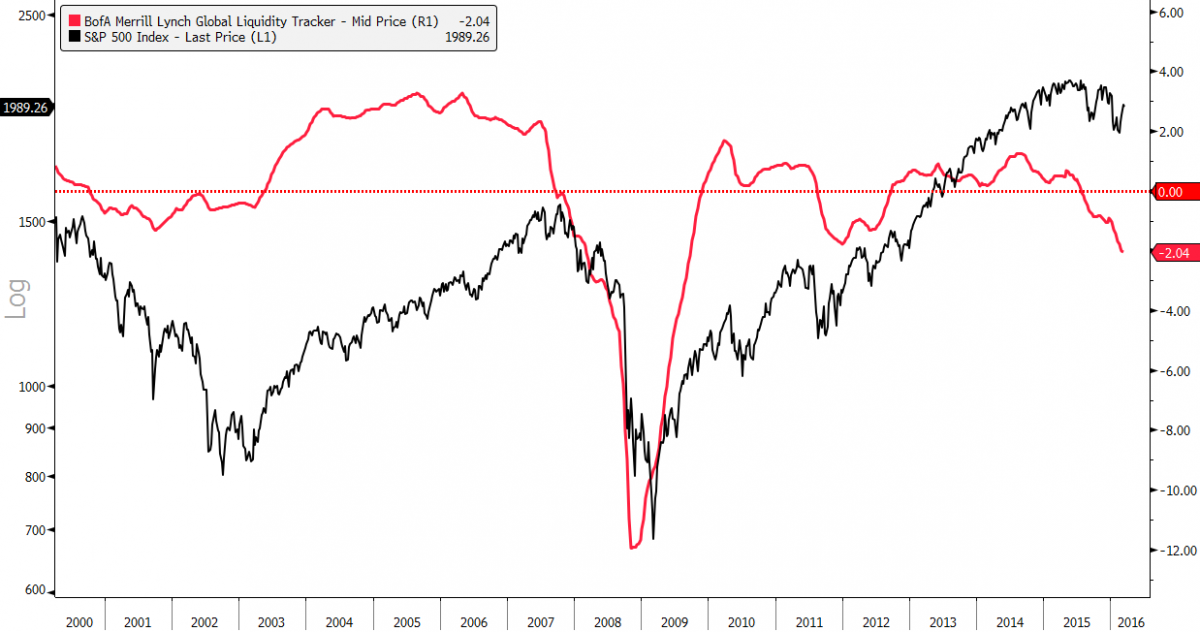One indicator we've been tracking regularly on our Bloomberg screens is BofA Merrill Lynch's Global Liquidity Tracker. As you can see below, it fell into negative territory right as the S&P 500 peaked in 2000 and again in 2007. Given that it measures liquidity conditions around the globe, it also dipped into negative territory in 2011-2012 during the height of the European debt crisis.
The latest data point shows that global liquidity has accelerated further into negative territory and now rests at levels we haven't seen since 2008.
From Bloomberg:
Our real-time Global Liquidity Tracker (GLT) is a composite indicator of liquidity conditions in emerging and developed economies. To estimate our GLT indicator, we employ a dynamic factor model used by global central banks. Our Liquidity Tracker extracts a common unobserved factor reflecting the greatest common variation among market spreads, asset prices, monetary and credit data across different frequencies. We combine our US, Euro area, Japan and EM Liquidity trackers into a global composite using financial weights reflecting the average relevance of an economy in terms of market capitalization and private sector credit. All of this allows us to produce timely estimates of liquidity conditions in an effort to asses the state of the global economy. A reading of zero indicates liquidity at its long-run average while activity between -3 and +3 represents the standard deviation from this average.
As we've pointed out before, in past economic cycles the Federal Reserve would usually be tightening monetary policy while liquidity conditions were still positive and in order to cool an overheating economy. At present, the economy is certainly not overheating and liquidity conditions already turned negative last year before the first rate hike. It will be important to monitor whether liquidity conditions stabilize or fall further in the weeks and months ahead. Stay tuned!
For a complete archive of our podcast interviews on finance, economics, and the market, visit our Newshour page here or iTunes page here. Subscribe to our weekly premium podcast by clicking here.







